One doesn’t need to look far to find roots for learning research supporting diversity, equity, inclusion, and belonging (DEIB). Dating back to 1984, Universal Design for Learning (UDL) originated in Harvard’s School of Graduate Education and was co-created by a developmental neuropsychologist and an educational psychologist.
UDL is a long-established research-based framework supporting learner variability across a full spectrum of learner profiles. The framework’s nature supports the unique needs of every learner and inherently guides aspects of DEIB. However, the specific language of the UDL framework falls short of today’s conversations around DEIB. Hence, Multistudio leveraged our five-year partnership with CAST, the central organization advocating the implementation and advancement of UDL, and our national work with diverse school communities, to create the K-12 Second Edition Deck of Spaces ™, a set of space design ideas specifically targeted at helping the conversation around DEIB and space design.
The Design of a Model School for DEIB Begins with the Engagement of Every Community Member
More and more school communities across the country are becoming increasingly diverse and rich in their make-up of individual members. Prompting inclusive community conversations around equitable design requires both social science and research methods science. Multistudio has been honing an approach that better captures accurate representation from every member of these communities and leverages our immersion into UDL methods and resources.
It begins with multiple methods of engagement. One must acknowledge community members may be challenged with various barriers such as transportation to stakeholder events, schedule availability, language, internet access, power dynamics, and simply a lack of belonging.
Second, formulating expertly written questions requires the skills of a researcher, educated in survey methodology, whether hosting in-person or online engagement. Stakeholder feedback can easily be tainted by biases written into the questions. It’s also challenging to lead respondents to generate actionable feedback that can be synthesized in meaningful ways.
Third, remaining neutral in the analysis of feedback requires the non-biased mindset of a researcher who is not looking for predetermined responses. One must manage complexity and ambiguity when interpreting the complex community voices that embody user group input and survey responses.
Lastly, a design team must dig deep into engagement outcomes to interpolate design strategies that respond to community voices and goals. It’s easy to default to status quo design patterns. These are familiar and low risk. They’re typically what a school owner knows and understands. But we’ll never reach an evidence-based design approach and better meet the needs of diverse communities if we aren’t true to the design translation of stakeholder input.
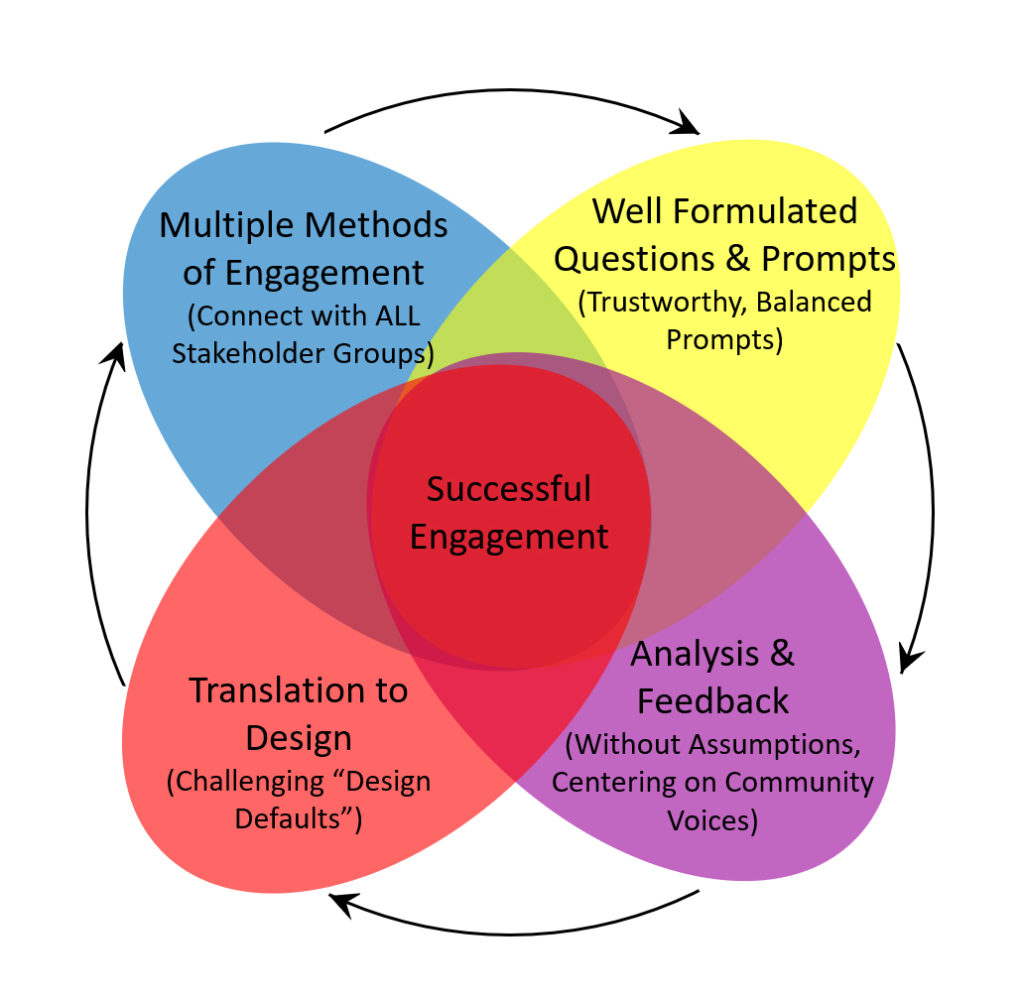
Many users have never seen schools other than the ones they’ve attended. Tools that awaken users to ideas they had not previously considered prompt powerful visioning. Users can guide their discovery with the expansive set of ideas in the Deck of Spaces ™ – it’s not a prescribed visioning tool aimed at certain outcomes. Users can prioritize ideas that are easy to identify with and collect a set that grows into their own guiding principles.
The Making of a Model School to Celebrate Diversity, Equity, Inclusion and Belonging
How many ways do our current schools exclude students, either physically or psychologically? Translating space design patterns into a model school that supports DEIB is invigorating, yet it often bumps into tensions relative to today’s status quo standards.
The Mission Bay School in the San Francisco Unified School District is a model for DEIB and UDL implementation. The school is highlighted by twelve primary design concepts to better support this highly diverse community.
- Engagement with the community was a cornerstone of the design. The school’s site design and ground-level engage the community and family members with onsite services, connections to the public park (Park lab), and community gathering spaces.
- Learning communities support differentiated learning, grouping students by readiness level rather than by grade level.
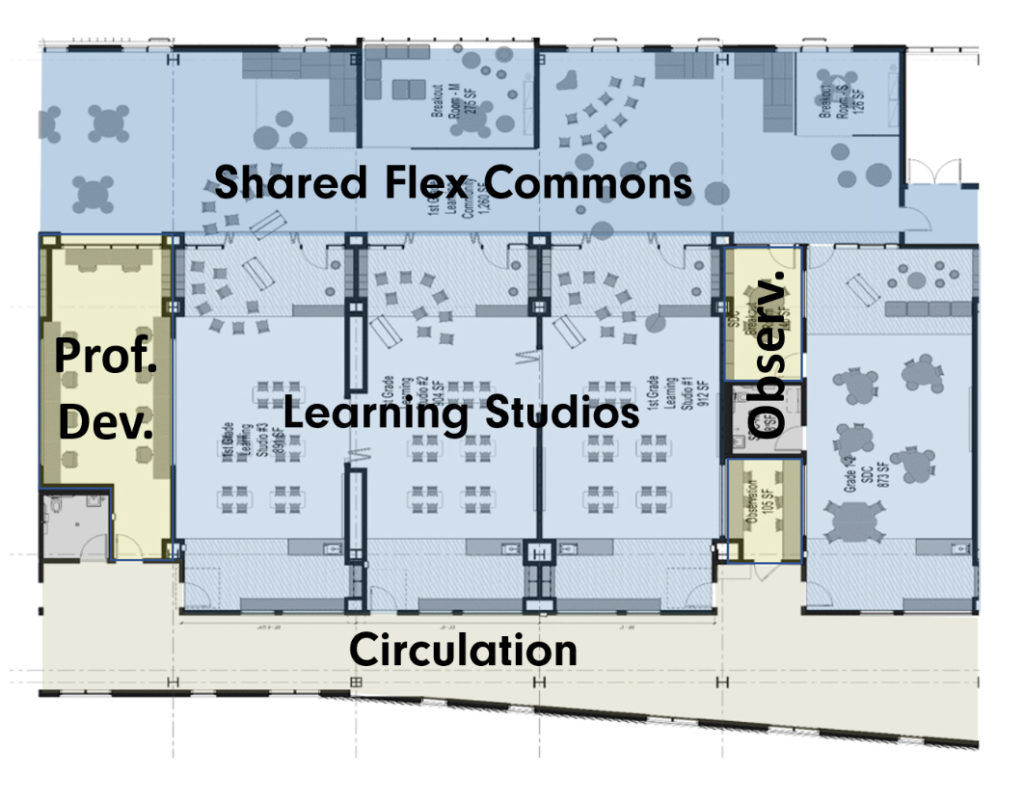
Learning Studios can collaborate with one another, spill out into Flex Commons for expanded learning modes and differentiated instruction, and students are offered a wider range of learning environments to support learner variability.
- A wide range of space types support a range of processes and learner variabilities. Within the varied zones of use. Students can find quiet areas of refuge, open spaces for building messy projects, soft quiet areas for reading and reflection, and desk-based areas for traditional classroom work.
- Project-based and maker-based learning offer more students more ways to express their learning mastery. Maker-based learning is not relegated to contained maker spaces, which are often too small and too tight to support expansive creativity.
- Mobile furniture and elements allow the open flexible spaces to be easily manipulated – students and teachers can create their own personalized learning settings. They can create fluid transitions from large to small groups, creating the ideal setting for resource pull-out or full-class activities.
- Pitch spaces offer students “a stage” on which to communicate the value of their ideas and their projects, learning essential communication and graduate readiness skills.
- Student agency is afforded via the differentiated learning spaces that amplify student mindsets and support self-directed learning.
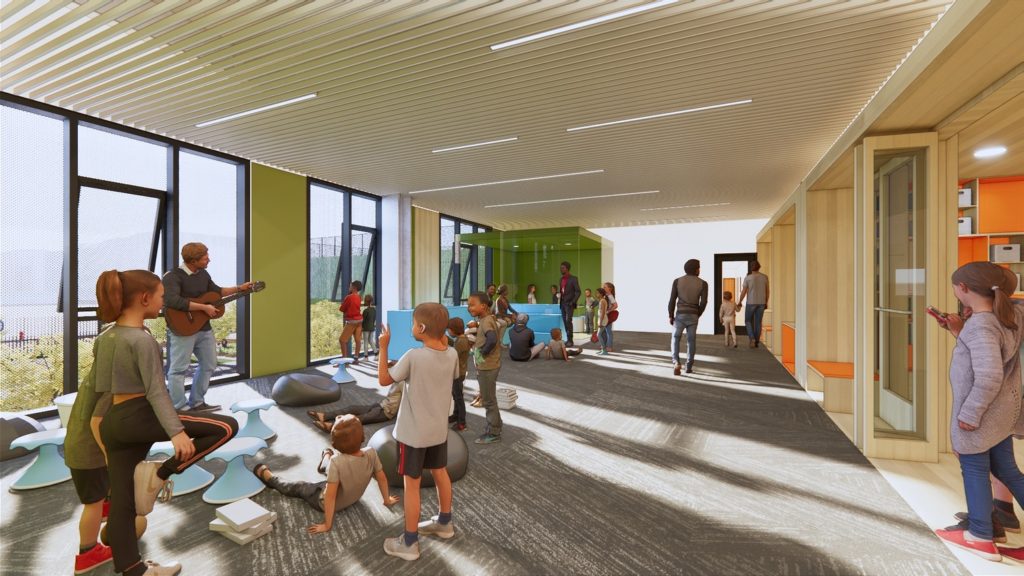
- Teacher variability is promoted through the learning community designs – teachers can easily adapt the way they teach within the space whether they tend toward more traditional instructional practices, or more differentiated and fluid processes for their students.
- Connectivity among classroom communities allows ample cross-class collaboration supporting more team-based work and more collaboration among teachers.
- Professional development and training spaces are integrated throughout the school, at multiple scales. The school serves as a “training lab” for teachers across the entire district.
- Student wellness is celebrated via ample daylight and connections to outdoors, plus healthy air quality and material selections. These connections to the environment awaken students’ senses and elevate learning quality.
- Outdoor play areas are re-imagined as rich outdoor learning environments that offer students even more modalities in which to explore their learning and discover untapped passions.
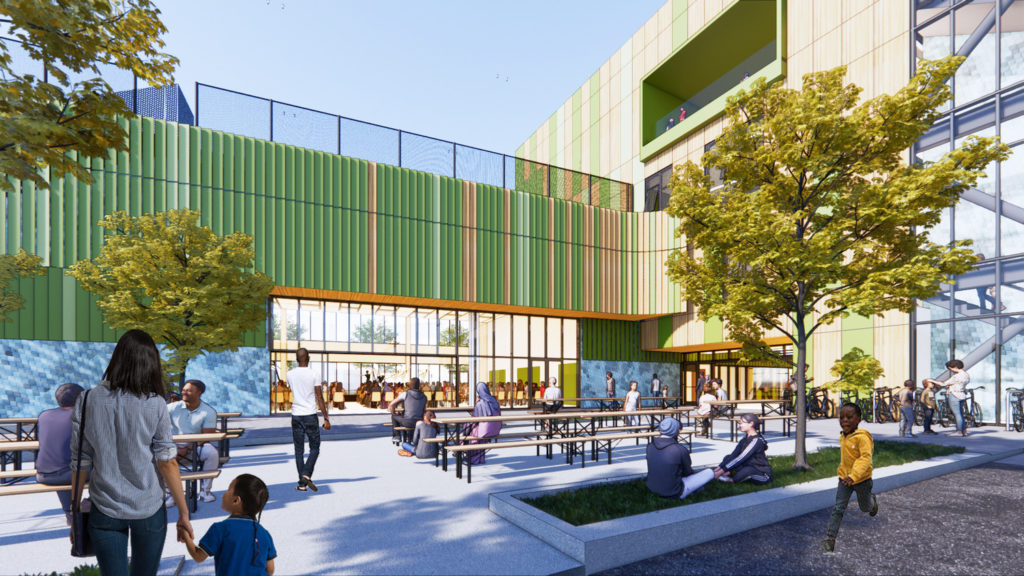
Immersion into a World of Possibilities – The Power of a Deck of Ideas
The early education philosophy of Reggio Emilia introduced us to the importance of considering the learning environment as “the third teacher.” The newly released Deck of Spaces ™ provides an easy-to-access tool for schools everywhere to imagine new ways to look at “the third teacher” – the space around them. Cross-referenced with the UDL framework, each of the 60 idea cards provides a thought-starter to reconsider space design, introducing users to creative applications from around the world. For example, have you considered the way your school approach and entry can better communicate a sense of welcome and hospitality for new families, some even new to this country? And have you considered how important a family’s sense of belonging at the school is to a student’s success? Linked to Annette Lareau’s research on concerted cultivation, one can learn the true importance of the family’s role in the management of their student’s education. This is just one of many ideas in the deck that span three categories: Student Experience, Educator Experience, and Paradigms & School Culture.
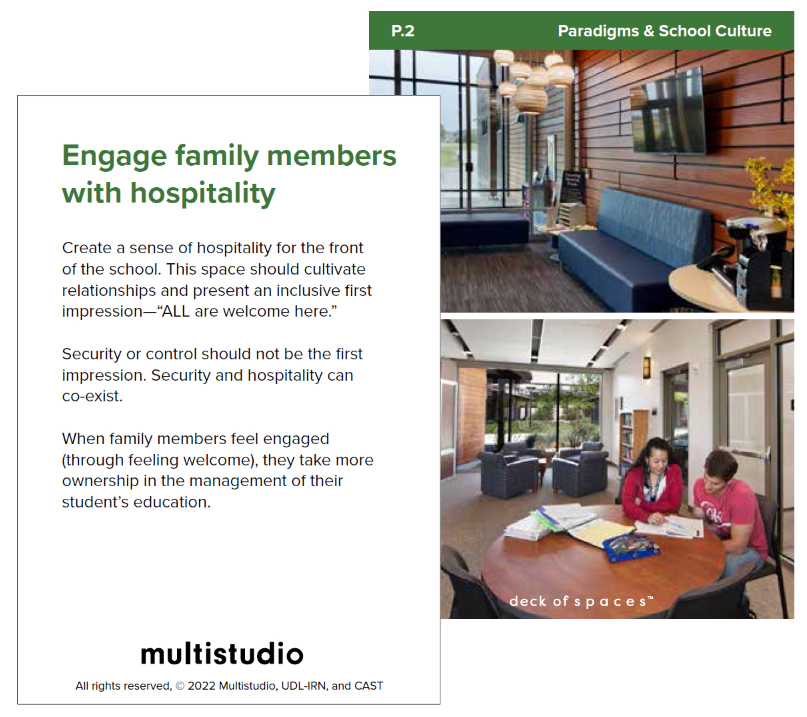
This new edition makes a much deeper dive into the unique needs of learners with non-binary self-identification, racial and ethnic representations, cognitive and physical (dis)abilities, trauma sensitivities, and socio-emotional needs.
Where to from here?
The topic of DEIB in our schools is nothing new, but the field has yet to fully explore how space acts as “the third teacher”. Aligning space with inclusive instruction is a powerful means to better support DEIB. Students are less likely to reach their full potential if they don’t feel a sense of belonging. We owe every student these opportunities to grow and flourish.
UDL provides a highly effective lens for connecting space design to issues in DEIB. But we mustn’t forget the effect of “the third teacher”. It’s too large an influencer in teacher and student behaviors to continue defaulting to what we’ve always known. Our ever-expanding diverse global community deserves learning spaces that evolve as quickly as the community members themselves.
Learn more at https://www.multi.studio/practice/education-design/ and www.DeckOfSpaces.com.

